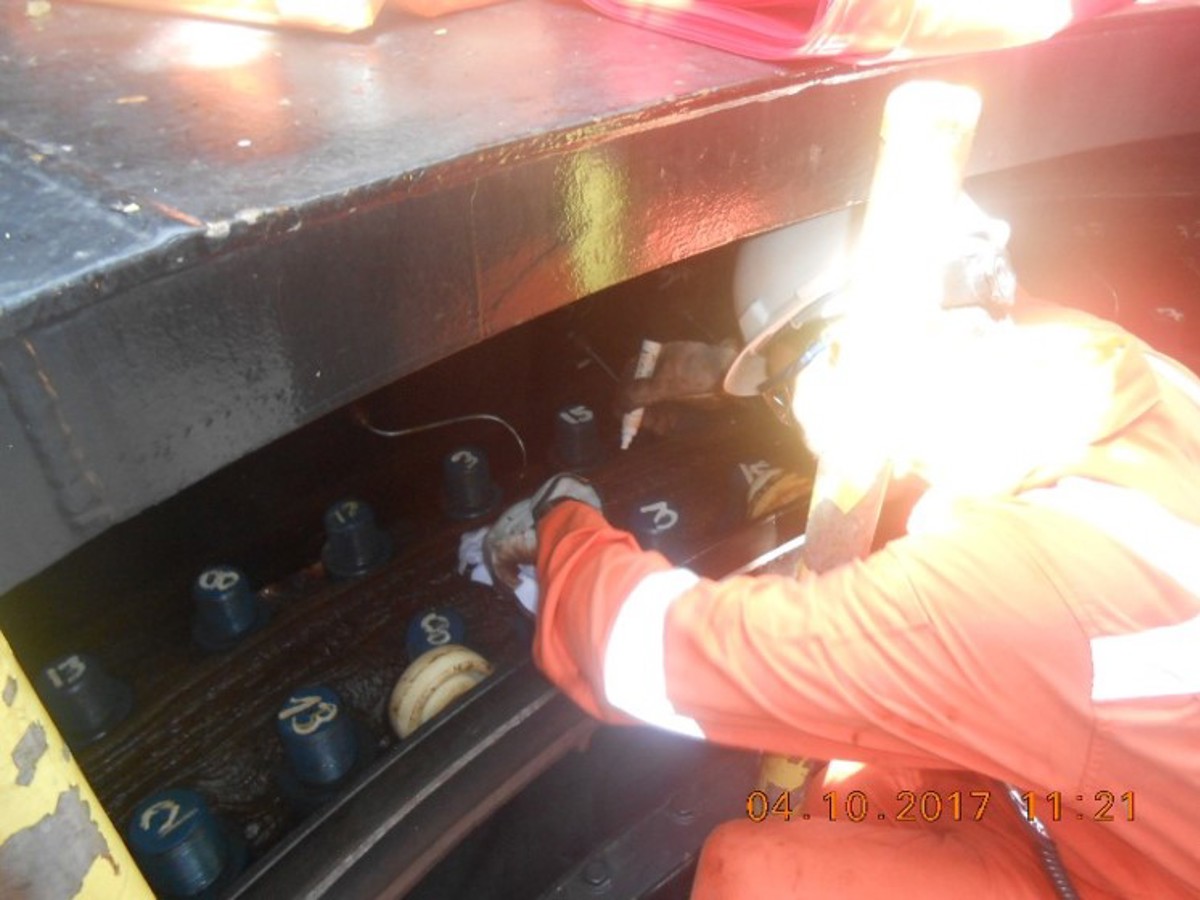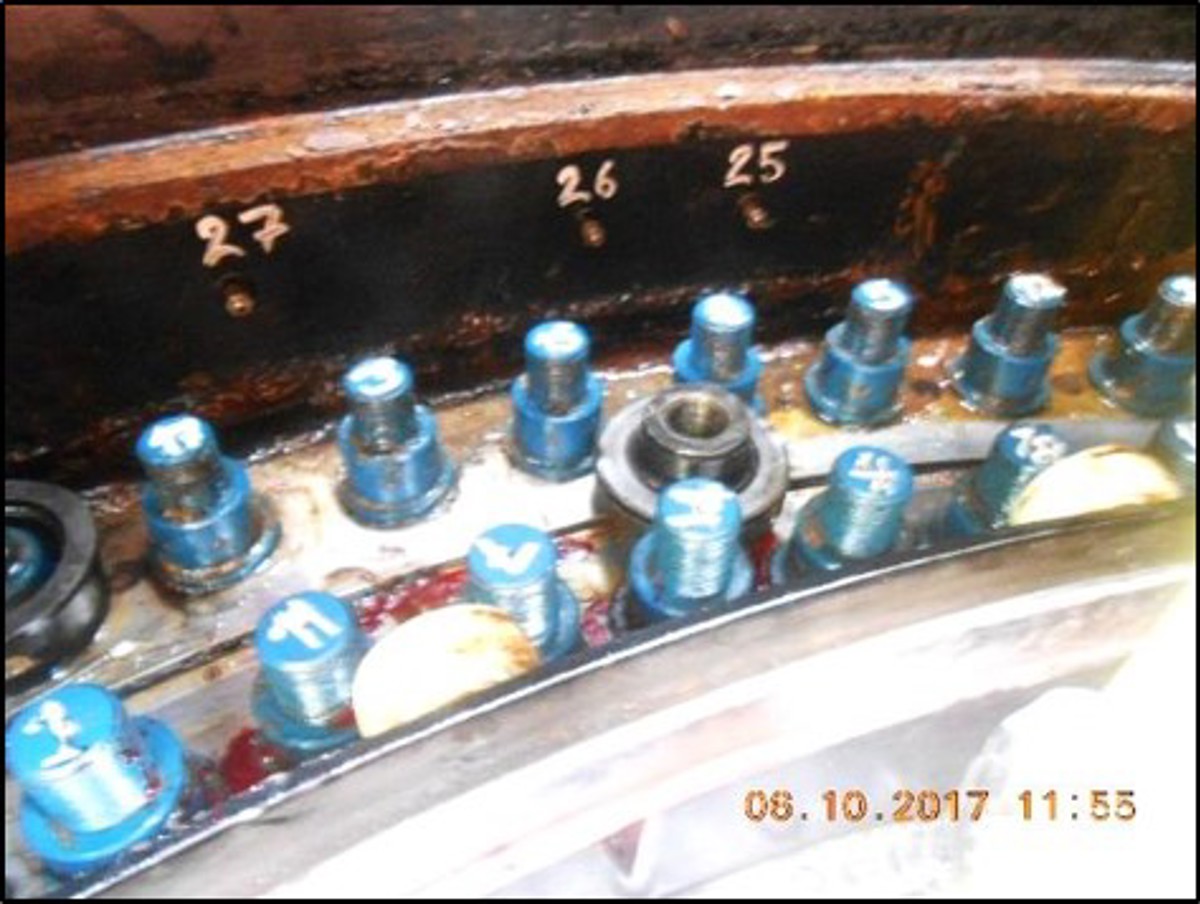Unplanned release of stored energy: Worker struck and injured by tensioning tool
- Safety Flash
- Published on 21 December 2017
- Generated on 7 December 2025
- IMCA SF 32/17
- 2 minute read
Jump to:
The International Association of Oil & Gas Producers (IOGP) has published Safety Alert 293 about an incident in which a worker was struck on the head and seriously injured when a tensioning tool came loose and hit him.
What happened?
A four-yearly task was in progress, to check the tension of bolts on the bearing of a floating storage and offloading (FSO) unit turret.
During moving the bolt tensioner, a part (the puller, weighing 13 kg) fell between the bearing stud bolts of the inner (static) and outer (rotating) bearing races. Before it could be removed the FSO weathervaned, trapping and compressing the tensioner part between the two rings of bolts.
A crew member went to investigate further. As he crouched over the tensioner part, it suddenly came free and struck him in the head causing serious injury. He was promptly medevaced to hospital onshore.

turret working location

tensioner part trapped between bearing race stud bolts
What went wrong? What were the causes?
- The risk of a tensioner part falling and becoming trapped between the stud bolts was not recognised in the job safety analysis (JSA), work procedure or turret vendor documentation.
- This risk was not recognised by the crew member, who placed himself ‘in the line of fire’.
- No stop work authority was applied when the task deviated from the expected work process.
- The design of the turret bearing races and stud bolts location allowed the tensioner part to become trapped and compressed when the FSO weathervaned.
Action taken
- Provide additional safeguarding tools and equipment to prevent the tensioner puller from dropping in between the inner and outer stud bolt or even this tool and equipment could help to support the re-tensioner while moving along the race.
- Investigate a manual handling tool that will reduce the risk of accidentally dropping the tensioner parts.
- Review the JSA and work procedure to include routine and unexpected risks and provide troubleshooting guidance. Include JSA to consider weather limits for the work and use of a tug on the FSO stern.
- Reinforce use of stop work authority if work deviates from normal conditions. Investigate if this task should be performed by a specialist contractor rather than the FSO crew.
- Develop ‘line of fire’ awareness training.
- Share information with other operating assets with an FPSO and future project FSO, to design out the hazard, e.g. put the two bearing races and rings of bolts at different elevations.
Related safety flashes
-
Stored energy near miss: Person nearly hit by equipment caught during light daughtercraft operations
IMCA SF 26/17
20 October 2017
-
-
IMCA SF 08/16
13 April 2016
-
IMCA SF 14/14
7 August 2014
IMCA Safety Flashes summarise key safety matters and incidents, allowing lessons to be more easily learnt for the benefit of the entire offshore industry.
The effectiveness of the IMCA Safety Flash system depends on the industry sharing information and so avoiding repeat incidents. Incidents are classified according to IOGP's Life Saving Rules.
All information is anonymised or sanitised, as appropriate, and warnings for graphic content included where possible.
IMCA makes every effort to ensure both the accuracy and reliability of the information shared, but is not be liable for any guidance and/or recommendation and/or statement herein contained.
The information contained in this document does not fulfil or replace any individual's or Member's legal, regulatory or other duties or obligations in respect of their operations. Individuals and Members remain solely responsible for the safe, lawful and proper conduct of their operations.
Share your safety incidents with IMCA online. Sign-up to receive Safety Flashes straight to your email.